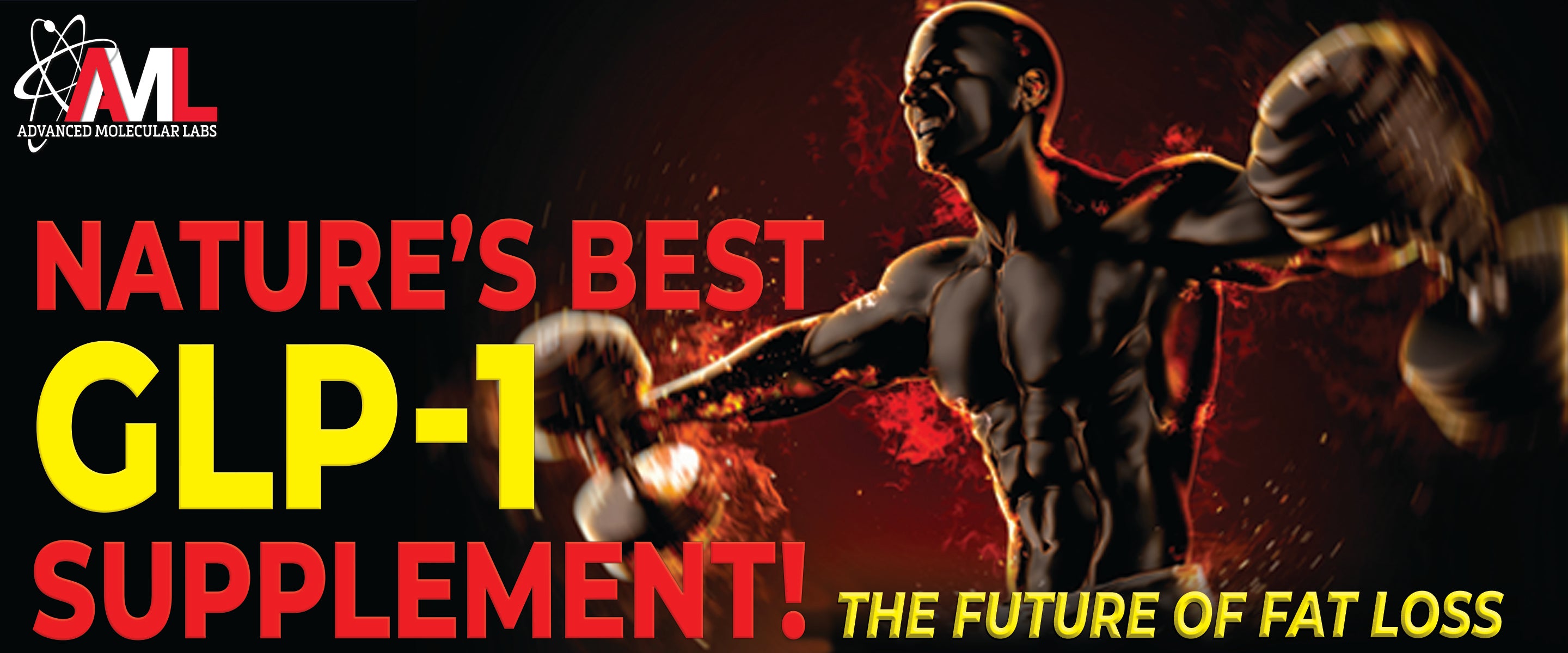


CAPSAICINOIDS - Miracle Powers for Fat Loss & Health
Capsaicinoids are a class of compounds naturally found in chili peppers that contribute to the hot and spicy flavor of the chili pepper. Capsaicinoids also function in humans, where their consumption has been shown to thermogenically increase energy expenditure, producing clinically significant levels of weight loss.1 Furthermore, the regular consumption of capsaicinoids has also been shown to significantly reduce appetite and food intake 1, which importantly supports long-term weight loss. Although the mechanism of action for fat loss is not completely understood, some of the details include capsaicinoid activation of the TRPV1 receptor, which triggers the release of noradrenaline. The release of noradrenaline increases energy expenditure and fatty acid oxidation within brown adipose tissue (BAT) by stimulating thermogenesis. In addition, the release of noradrenaline from capsaicinoid intake also reduces hunger by activating noradrenaline receptors in the brain that produce feelings of satiety.2
Capsaicinoids also trigger release of the neurotransmitter dopamine within the brain, increasing motivation and arousal within the central nervous system.3 The ability of capsaicinoids to bolster motivation supports a more energized workout for a superior training effect. Additional research has also demonstrated that capsaicinoids can have a positive impact on your health by decreasing cholesterol levels for improved cardiovascular performance.4
Thermogenically Melt Body Fat
Several studies have shown that the TRPV1 receptor is activated by various food-related compounds that bind to TRPV1 within the oral cavity or gastrointestinal tract, activating the sympathetic nervous system and BAT-activated thermogenesis. Among the TRPV1 activators investigated so far, the most extensively studied has been capsaicinoids.5,1
Capsaicinoid-induced release of noradrenaline promotes fat loss by increasing a process known as thermogenesis in BAT. This occurs when noradrenaline binds the beta-adrenergic receptor embedded within the cellular membrane of BAT, which turns up fatty acid oxidation. BAT is composed of a unique type of fat cell that generates a considerable amount of heat instead of cellular energy (ATP) when oxidizing fat. As a result, instead of the energy from fatty acid oxidation synthesizing ATP, it is instead thermogenically converted into heat, which boosts fat burning as well as energy expenditure.
In several studies, capsaicinoids were shown to increase BAT-driven thermogenesis in humans through the activation of TRPV1 found in the oral cavity and gastrointestinal tract. Activation of TRPV1 stimulated noradrenaline release, driving BAT-induced thermogenesis and fat loss.6-8 In addition, other studies showed that longer term ingestion of capsaicinoids for approximately six weeks increased the amount of BAT tissue for even greater levels of thermogenesis and reduced body fat.9,5
Keep Fat Off by Reducing Hunger
Attempts to advance weight loss and weight maintenance have rapidly embraced the use of several naturally occurring compounds that burn fat while also decreasing appetite. One of the more effective examples being capsaicinoids, which have been shown to reduce food intake1,10,11 while also significantly reducing the desire to eat more food.10
Although an influence on appetite has been observed in several trials, it is not completely understood how capsaicinoids reduce appetite. However, some of the details have been uncovered. It appears that the release of noradrenaline triggered by the capsaicinoid, by way of the TRPV1-related mechanism, minimizes appetite as the stimulation of the noradrenaline receptors in the brain has been shown to produce feelings of satiety.12 In addition, the consumption of capsaicinoids has been shown to cause an increase in the gut-derived hormone GLP-1, which regulates regions of the brain that control food intake, resulting in reduced hunger and food consumption.2
Altogether, capsaicinoids potently stimulate and preserve fat loss, as the preponderance of recent evidence clearly shows their comprehensive ability to increase energy expenditure and fat oxidation while simultaneously reducing appetite.
Increase Motivation and Arousal for More Intense Training
A decrease in the neurotransmitter dopamine within the central nervous system (CNS) is associated with feelings of tiredness and lack of motivation, especially during prolonged exercise.13 On the contrary, greater dopamine levels favor improved performance through the maintenance of motivation and arousal. The decrease in dopamine during exercise is due to the degradation of dopamine that comes from increased neuronal activity within the CNS during exercise.14 Therefore, increasing dopamine levels by reducing its exercise-induced degradation will improve CNS function, elevating exercise performance.
Capsaicin, the main capsaicinoid found in chili peppers, has recently been shown to boost dopamine levels in rats.3 In a study by Marinelli et al., the researchers showed that the injection of capsaicin into mice enhanced dopamine production and release. Moreover, this effect was shown to be mediated through TPRV1 activation, as chemical inhibition of TRPV1 in this study also inhibited the release of dopamine. These results suggest that capsaicinoid activation of TRPV1 has multiple effects within the body, where one of them is a positive influence on dopamine release in the brain.
Lower Cholesterol
In addition to the previously mentioned benefits, research has also demonstrated that capsaicinoids have a beneficial influence on the cardiovascular system. In one study by Huang et al.15, they showed that capsaicinoids, but not the chemically related capsinoids, appreciably increased the production of bile acids. The authors of this study suggest that the increased bile acid levels from capsaicinoid ingestion contribute significantly to the hypocholesterolemic effect of capsaicinoids, as cholesterol is removed from the body by way of bile acids. In addition, the authors also proposed that the increased conversion of cholesterol into bile acids in response to capsaicinoid ingestion also contributes to the cholesterol-lowering effect of capsaicinoids.
Interestingly, additional studies have shown that bile acids also reduce body fat by upregulation of thyroid hormone signaling and thermogenesis in BAT16, indicating yet one more fat-burning mechanism caused by capsaicinoids.
In closing, because of the exceptional influence that capsaicinoids have on fat loss, exercise performance and overall health, Advanced Molecular Labs and its CEO Steve Blechman have added a unique blend of capsaicinoids to its revolutionary products Thermo Heat and Thermo Heat Nighttime, making both of these products cutting-edge fat burners that bolster performance in the gym while concurrently supporting a healthier lifestyle.
For most of Michael Rudolph’s career he has been engrossed in the exercise world as either an athlete (he played college football at Hofstra University), personal trainer or as a research scientist (he earned a B.Sc. in Exercise Science at Hofstra University and a Ph.D. in Biochemistry and Molecular Biology from Stony Brook University). After earning his Ph.D., Michael investigated the molecular biology of exercise as a fellow at Harvard Medical School and Columbia University for over eight years. That research contributed seminally to understanding the function of the incredibly important cellular energy sensor AMPK— leading to numerous publications in peer-reviewed journals including the journal Nature. Michael is currently a scientist working at the New York Structural Biology Center doing contract work for the Department of Defense on a project involving national security.
References:
1. Whiting S, Derbyshire E and Tiwari BK. Capsaicinoids and capsinoids. A potential role for weight management? A systematic review of the evidence. Appetite 2012; 59, 341-348.
2. Wellman PJ. Norepinephrine and the control of food intake. Nutrition 2000;16, 837-842.
3. Marinelli S, Pascucci T, et al. Activation of TRPV1 in the VTA excites dopaminergic neurons and increases chemical- and noxious-induced dopamine release in the nucleus accumbens. Neuropsychopharmacology 2005; 30, 864-870.
4. Zhang L, Zhou M, et al. Hypocholesterolemic effect of capsaicinoids by increased bile acids excretion in ovariectomized rats. Mol Nutr Food Res 2013; 57, 1080-1088.
5. Snitker S, Fujishima Y, et al. Effects of novel capsinoid treatment on fatness and energy metabolism in humans: possible pharmacogenetic implications. Am J Clin Nutr 2009; 89, 45-50.
6. Nedergaard J, Bengtsson T and Cannon B. Unexpected evidence for active brown adipose tissue in adult humans. Am J Physiol Endocrinol Metab 2007; 293, E444-452.
7. Saito M, Okamatsu-Ogura Y, et al. High incidence of metabolically active brown adipose tissue in healthy adult humans: effects of cold exposure and adiposity. Diabetes 2009; 58, 1526-1531.
8. van Marken Lichtenbelt WD, Vanhommerig JW, et al. Cold-activated brown adipose tissue in healthy men. N Engl J Med 2009; 360, 1500-1508.
9. Ludy MJ, Moore GE and Mattes RD. The effects of capsaicin and capsiate on energy balance: critical review and meta-analyses of studies in humans. Chem Senses 2012; 37, 103-121.
10. Yoshioka M, St-Pierre S, et al. Effects of red pepper on appetite and energy intake. Br J Nutr 1999; 82, 115-123.
11. Yoshioka M, Imanaga M, et al. Maximum tolerable dose of red pepper decreases fat intake independently of spicy sensation in the mouth. Br J Nutr 2004; 91, 991-995.
12. Westerterp-Plantenga MS, Smeets A and Lejeune MP. Sensory and gastrointestinal satiety effects of capsaicin on food intake. Int J Obes (Lond) 2005; 29, 682-688.
13. Acworth I, Nicholass J, et al. Effect of sustained exercise on concentrations of plasma aromatic and branched-chain amino acids and brain amines. Biochem Biophys Res Commun 1986; 137, 149-153.
14. Davis JM and Bailey SP. Possible mechanisms of central nervous system fatigue during exercise. Med Sci Sports Exerc 1997; 29, 45-57.
15. Huang W, Cheang WS, et al. Capsaicinoids But Not Their Analogue Capsinoids Lower Plasma Cholesterol and Possess Beneficial Vascular Activity. J Agric Food Chem 2014.
16. Watanabe M, Houten SM, et al. Bile acids induce energy expenditure by promoting intracellular thyroid hormone activation. Nature 2006; 439, 484-489.




